Economic benefits, easy management, environmental friendliness
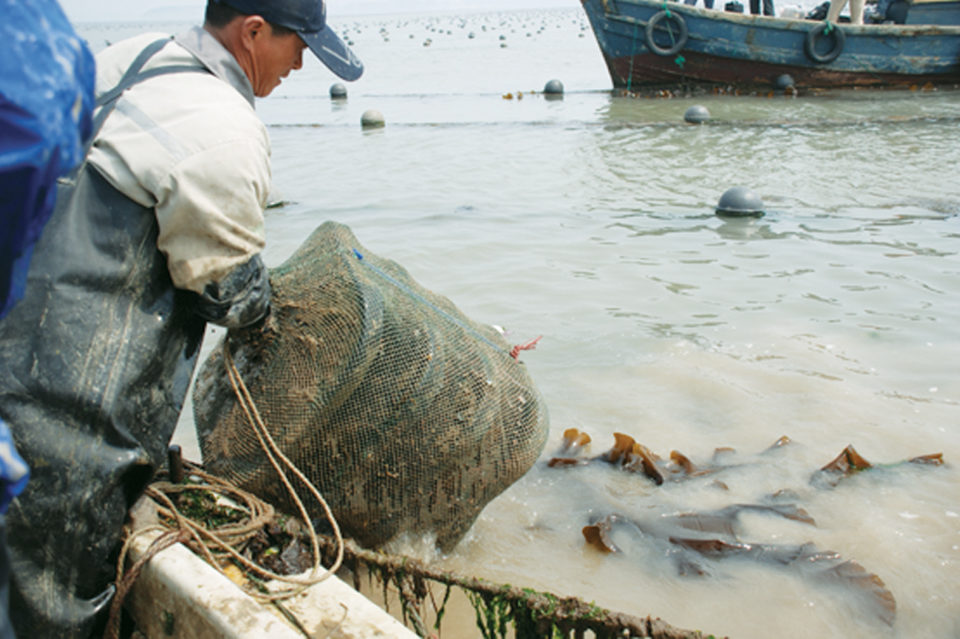
Integrated multitrophic aquaculture (IMTA) production involving fish, seaweed and shellfish is well developed in China’s Sanggou Bay. A new IMTA system combining abalone (Haliotis discus hannai), kelp (Laminaria japonica) and sea cucumbers (Apostichopus japonicas) offers economic benefits, easy management and environmental friendliness.
Sea cucumbers are detrivores that feed on decaying organic matter in coastal sediments. This characteristic makes them an interesting candidate for use in IMTA systems, where they feed on sedimented particulate matter – an unused ecological niche. Organisms such as filter-feeding bivalves extract suspended particulate matter, and seaweeds extract dissolved inorganic nutrients.
In China, sea cucumbers have a high market price and are commonly cultured in tidal ponds or indoor tanks. Abalone and kelp are co-cultured on a large scale from suspended longlines in the coastal waters of North China.
Study setup
In the authors’ recent study, sea cucumbers were added directly to abalone cages with no modifications of the culture equipment to form a simple and low-cost production system. To evaluate the performance of the system, the growth of the sea cucumbers was monitored during a seven-month field experiment in Lidao, near Sanggou Bay, Shandong Province, North China.
The standard 60- x 50- x 50-cm abalone cages contained three layers and were suspended from kelp longlines at a depth of 5 meters. Abalone about 52 mm in shell length were stocked at a normal commercial density of 250 animals per cage and fed with kelp according to normal production procedures.
Sea cucumbers weighing about 65 grams each were added to the cages at four densities: 1, 2, 4 and 6 individuals per layer. These treatments were designated 1SC, 2SC, 4SC and 6SC. One control cage, 1SC-0A, contained 1 sea cucumber per layer, but no abalone. There were three replicate cages for each treatment, except 6SC and 1SC-0A, which had only one replicate.
The experiment lasted from October 2008 to May. The wet body weight of all sea cucumbers was recorded monthly. Water was sampled monthly for analysis of particulate organic matter and total nitrogen. In March, April and May, sediment traps were deployed at culture depth for calculation of the sedimentation rate.
Results
During the study, average sea cucumber body weight increased by 96 percent to 128.8 grams in May. The average specific growth rate (SGR) for all treatments during the whole experiment was 0.33 percent/day. Growth was highest during the first month with an average SGR of 1.00 percent/day (Table 1).
Jian-guang, Mean average body weights and specific growth rates, Table 1
| Month | Body Weight (g) | Specific Growth Rate (%/day) | Temperature (° C) |
|---|---|---|---|
| October | 65.5 ± 2.0 | – | 18.0 |
| November | 90.3 ± 2.4 | 1.00 | 13.5 |
| January | 96.1 ± 2.5 | 0.13 | 3.5 |
| February | 105.2 ± 2.9 | 0.26 | 3.0 |
| March | 109.9 ± 3.0 | 0.20 | 6.5 |
| April | 110.9 ± 3.1 | 0.03 | 8.5 |
| May | 128.8 ± 4.1 | 0.43 | 13.0 |
As the temperature dropped from 18 degrees-C in October to 3 degrees in January, the growth rate decreased. During the months of
November through April, winter growth was slow, with an average SGR of 0.14 percent/day. In May, the temperature had increased to 13 degrees-C, and during the last month, SGR increased to 0.43 percent/day.
Average SGR for the whole experimental period was highest for 1SC at 0.40 ± 0.04 percent/day and lowest for 6SC at 0.30 ± 0.01 percent/day, but no statistically significant difference was found among any treatments (Table 2), and no clear trend was visible. All treatments showed high growth during the first month, but at low temperatures during the winter, it appeared that a low density of sea cucumbers produced higher growth. In the last month, the trend became unclear again, although 1SC had the highest growth rate.
Jian-guang, Mean average body weights and specific growth rates, Table 2
| Treatment | Initial Body Weight (g) | Final Body Weight (g) | Specific Growth Rate (%/day) | Total Growth (%) |
|---|---|---|---|---|
| 1SC-0A | 98.7 ± 12.5 | 186.7 ± 11.5 | 0.32 ± 0.07 | 89.2 |
| 1SC | 60.6 ± 3.6 | 137.8 ± 5.7 | 0.40 ± 0.04 | 129.2 |
| 2SC | 63.4 ± 5.3 | 120.3 ± 4.1 | 0.32 ± 0.02 | 90.4 |
| 4SC | 66.2 ± 2.8 | 132.4 ± 9.6 | 0.34 ± 0.05 | 100.0 |
| 6SC | 63.4 ± 5.7 | 118.5 ± 13.1 | 0.30 ± 0.01 | 78.3 |
The limited number of replicates, large variance in sea cucumber initial body weight and highly variable growth rate for individual sea cucumbers made it difficult to distinguish among treatments. From the initial and final size distribution (Fig. 1), it was clear that sea cucumber growth performance was highly uneven. It appeared that many of the smaller individuals grew very little, while the bigger individuals grew faster.
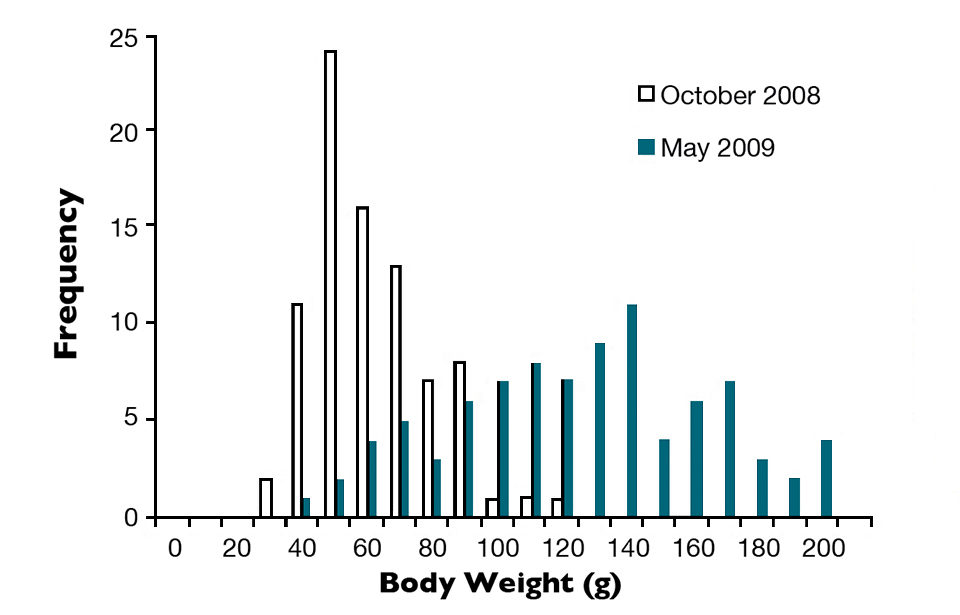
Sedimentation
The rate of sedimentation was high, with a maximum of 1,185 grams dry weight per square meter per day in March and a minimum of 863 grams dry weight per square meter per day in May. This was well above the range of 50-500 grams per square meter per day previously reported for Sanggou Bay. Organic matter ranged from 7.67 percent in March to 8.29 percent in April – lower than the 8.00 to 14.00 percent values previously reported.
Available food sources for the sea cucumbers included abalone feces, kelp detritus and “background” sediments from the water. The high sedimentation rate and high growth rate of the sea cucumbers 1SC-0A control group indicated that background sediments are likely important food sources. Large amounts of sediments were observed in the cages when they were removed from the water.
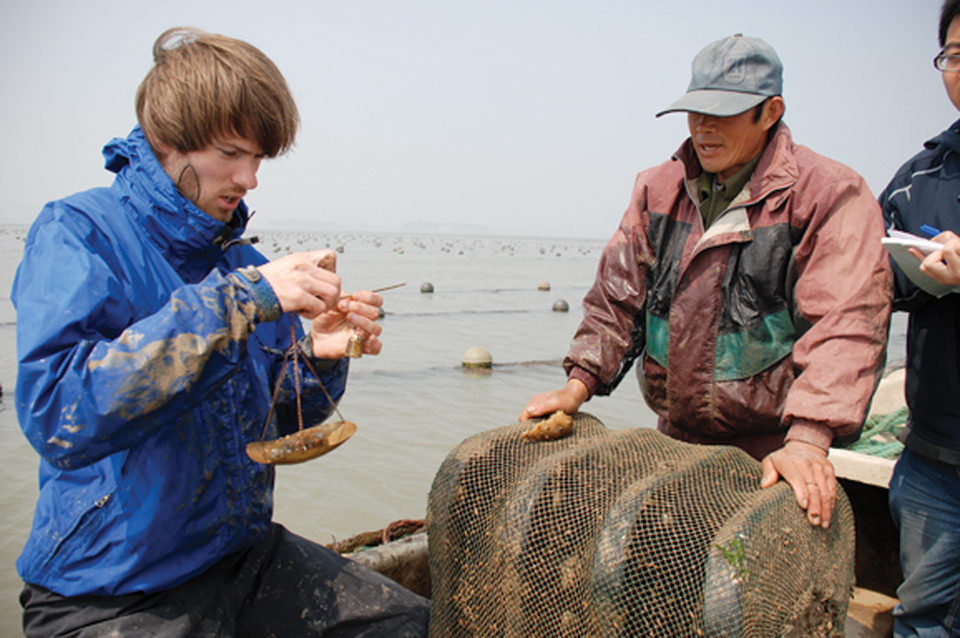
Perspectives
The high overall growth rate of the sea cucumbers during the study showed that adding sea cucumbers directly to abalone cages may be a feasible production technique. Compared to production in land-based facilities, tidal ponds or extensive bottom culture, this method is simple and only requires a minimum of extra labor or additional capital investment.
Considering the high market price of sea cucumbers, it should be an economically interesting idea for abalone farmers. In addition to increasing income and production output for farmers, the sea cucumbers may reduce the aquaculture impact on the local environment by assimilating nutrients and organic matter not fully utilized by the other farmed species.
(Editor’s Note: This article was originally published in the July/August 2009 print edition of the Global Aquaculture Advocate.)
Now that you've reached the end of the article ...
… please consider supporting GSA’s mission to advance responsible seafood practices through education, advocacy and third-party assurances. The Advocate aims to document the evolution of responsible seafood practices and share the expansive knowledge of our vast network of contributors.
By becoming a Global Seafood Alliance member, you’re ensuring that all of the pre-competitive work we do through member benefits, resources and events can continue. Individual membership costs just $50 a year.
Not a GSA member? Join us.
Authors
-
Dr. Fang Jian-guang
Yellow Sea Fisheries Research Institute
China Academy of Fishery Sciences
106 Nanjing Road
Qingdao, Shandong 266071 China[110,99,46,99,97,46,105,114,102,115,121,64,103,106,103,110,97,102]
-
Dr. Jon Funderud
Norwegian University of Science and Technology
Trondheim, Norway -
Dr. Qi Zhan-hui
Yellow Sea Fisheries Research Institute
China Academy of Fishery Sciences
106 Nanjing Road
Qingdao, Shandong 266071 China -
Dr. Zhang Ji-hong
Yellow Sea Fisheries Research Institute
China Academy of Fishery Sciences
106 Nanjing Road
Qingdao, Shandong 266071 China -
Dr. Jiang Zeng-jie
Yellow Sea Fisheries Research Institute
China Academy of Fishery Sciences
106 Nanjing Road
Qingdao, Shandong 266071 China -
Dr. Wang Wei
Yellow Sea Fisheries Research Institute
China Academy of Fishery Sciences
106 Nanjing Road
Qingdao, Shandong 266071 China
Tagged With
Related Posts
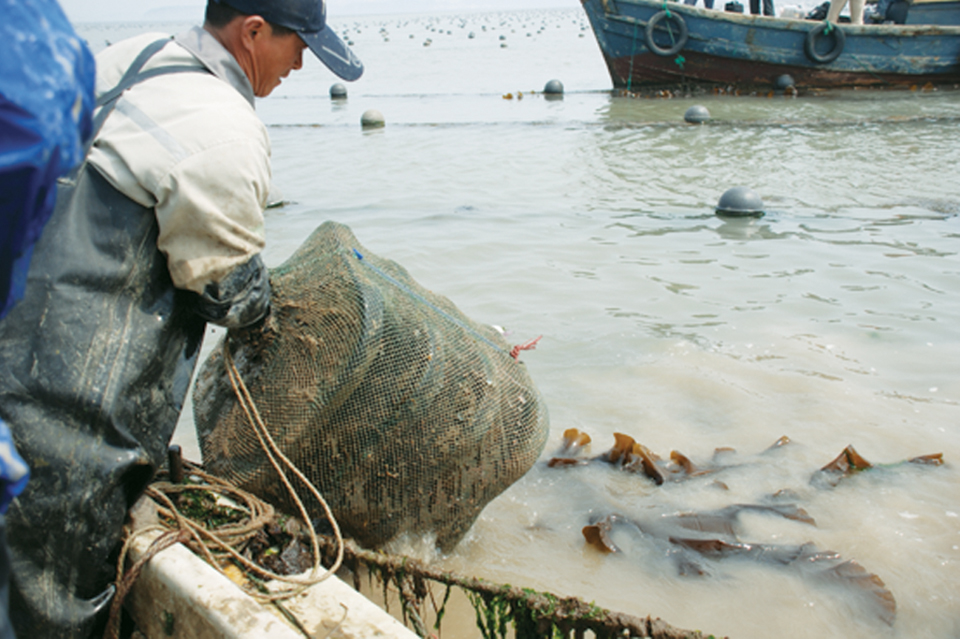
Responsibility
Sea cucumbers enhance IMTA system with abalone, kelp in China
In the authors’ recent study, sea cucumbers were added directly to abalone cages with no modifications of the culture equipment to form a simple, low-cost IMTA production system.
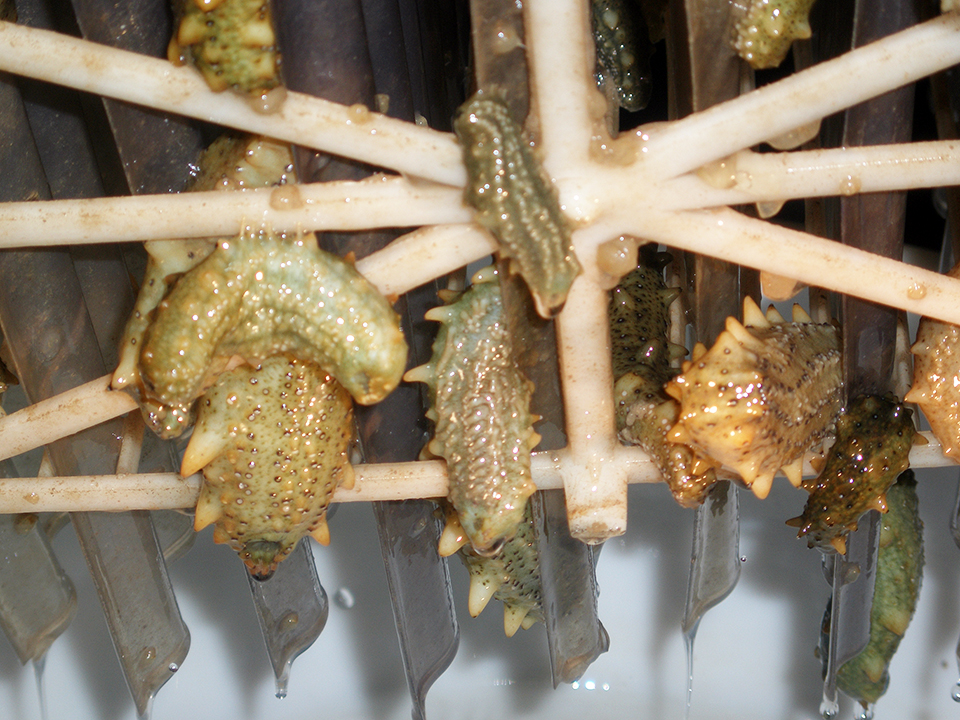
Health & Welfare
Probiotics improve nursery performance of juvenile sea cucumbers
While sea cucumbers are one of the most prized seafoods in China and Asia, their production suffers from suboptimal juvenile production. The use of proper feeds and overall management in the nursery can improve yield and survival.
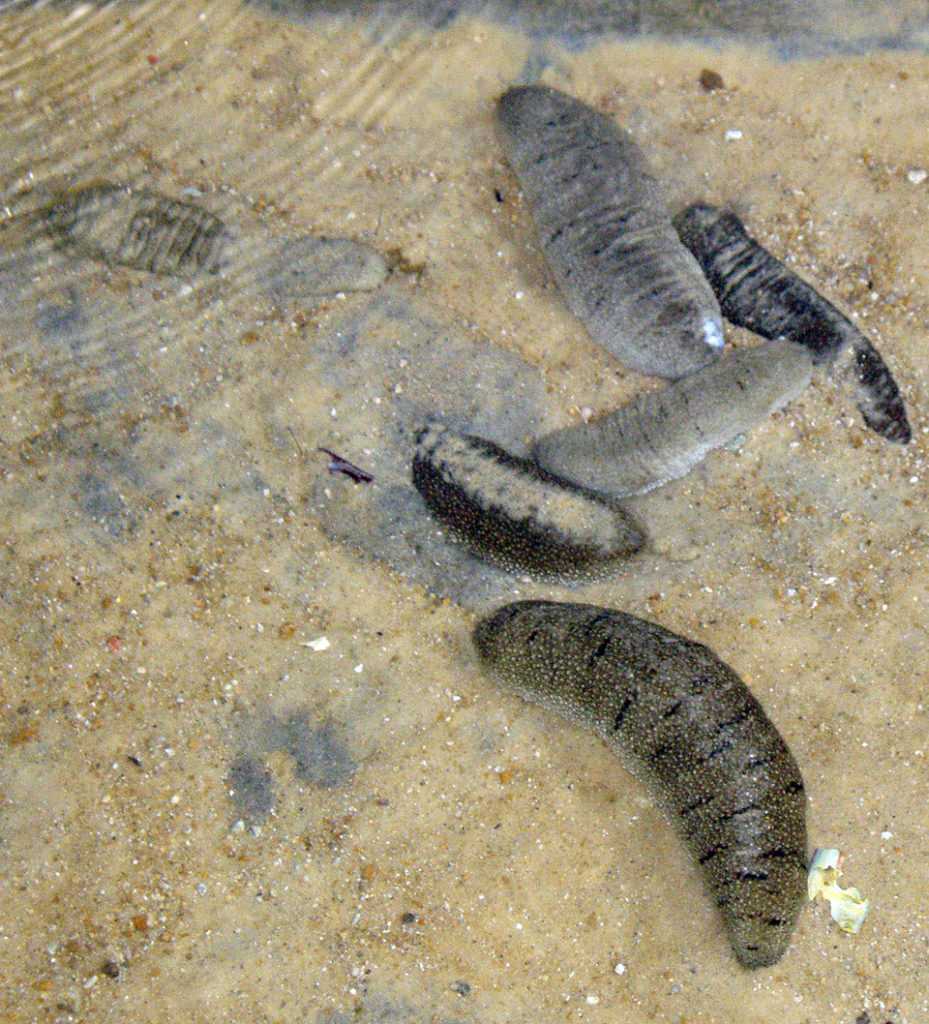
Health & Welfare
Sandfish, profitable sea cucumbers, also supply bioremediation
Sandfish, a high-value sea cucumber, supports the aquaculture of other fish species by cleaning up waste on the bottoms of ponds or sea cages.
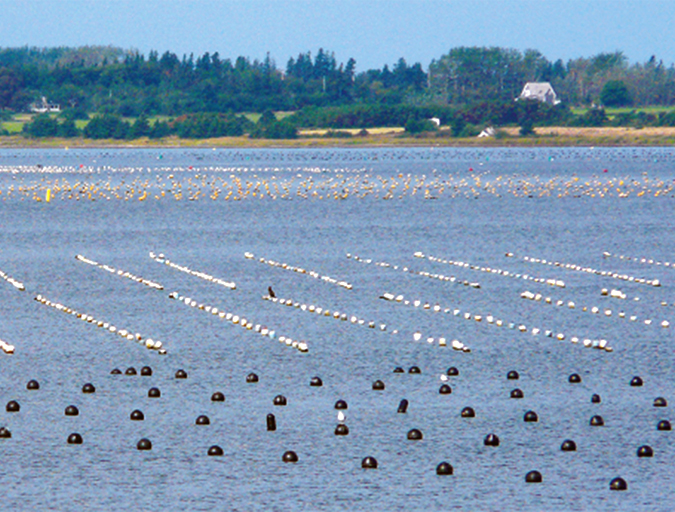
Innovation & Investment
Aquaculture in Canada: status, perspectives
Canada exports farmed seafood products to more than 22 countries and is the main seafood supplier to the U.S. market. Finfish, primarily salmon, production is strong and shellfish production is growing, but diversification will be imperative to maintain competitiveness.


